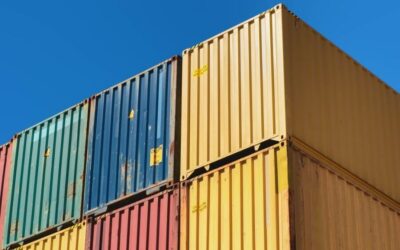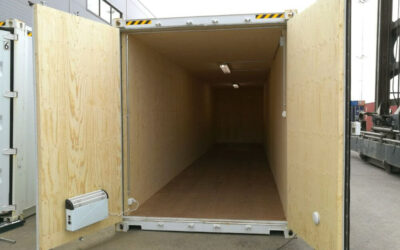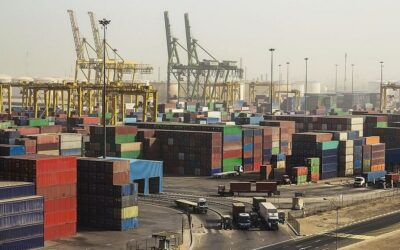What is Switch Bill of Lading: The Ultimate Guide
Table of Contents
With the increased interconnectedness, in the current globalized world, freight forwarders work for multiple international organizations and have to deal with more international transactions. The Bill of lading though seems difficult to understand, makes the shipping process convenient for the business parties as it makes sure that everything happens according to the agreed conditions. The bills of lading verify that the products shipped are exactly according to what was ordered and in good condition. The bill of lading provides with crucial shipment information including
- Carrier’s name and his/her signature
- Consignee’s name
- The ship’s master or a legal representative of the above-mentioned parties.
- Date of shipping
- Detailed description of the goods to be exported their value, count, size, weight
- Name of the port of loading and destination
- Terms and conditions
- Any Special Instructions.
Types of Bill of Lading
There are many types of Bills of Lading. Some of them are:
- Straight B/L
- Shippers order B/L
- Airway bill B/L
- Originals B/L
- Inland B/L
- Multimodal or combined transport B/L
- Through BOL
- Switch B/L
What is Switch Bill of Lading
One of the most common types of trade is the triangular trade. A mediator or a middle man is often involved in a trade where the importers do not trade directly with the original seller and the trade happens between three parties.
Triangular Trade Documentation
The movement of the goods might be different from the real commercial transaction taking place. But as far as the documentation is concerned, the shipping and the commercial documents must not be contradictory. For every transaction, a bill of lading is to be issued. But in the above-mentioned case, the trader buys the goods from the original seller and then sells it to the importer.
For the first transaction, the bill of lading is issued but for the second transaction, a switch bill of lading needs to be issued. It is issued as a replacement for the Original Bill of Lading.
It is often used for international shipments, where the shipper has to keep the information related to the supplier secret.
What Are Switch Bills of Lading Used For?
Oftentimes the trading agents have to conceal the information related to the factory from the end buyer. This can be made possible through the switch bill of lading. The switch bill of lading is the second set of bill of lading which substitutes the original bill of lading issued during the shipment.
This bill of lading is issued by the carrier or by their representative.
Though both the bills are about the same cargo.
The information on the switch bill of lading is different from that on the original bill of lading. It is often edited or some parts may be hidden.
What specifically is contained in the Switch Bill of Lading?
The Switch Bill of Lading is different from the Original Bill of Lading. But they do serve the same purpose:
- Act as the receipt of goods
- Acts as the proof of the contract between the shipper and the bearer of the shipment
- Lists the details of the goods
Reason to issue a Switch of landing
The Switch Bill of Lading can only be issued in the place of the original Bill of Lading. The issuance may be issued to serve the interests of any of the three parties involved in the direct transactions i.e.
- The purchase or sale of the cargo
- Cargo buyer or seller
- Trading agent
- Consignee
The bill is usually issued in these cases:
- If the seller wants to conceal the actual seller from the consignee in order to prevent any direct dealing between them
- To hide the country of origin of the products
- In case the original bill is held up in the country of shipment
- If the shipment arrives before the bill does.
- If the shipping agent wants to receive the payment from the consignee before paying the seller.
- If the goods have been resold on the way and the name of the discharge port needs to be changed.
- If certain minor edits are to be made or specification has to be added. For example in the place of ‘appliances’, ‘home appliances’ need to be added.
- If the goods were shipped in small packages with multiple Bills of Lading and the consignee wants a single Bill of Lading or conversely, if the consignee wants multiple Bills instead of a single one then the Switch Bill of Lading is issued.
Also Read: Ocean Freight Vs. Air Freight: Which Is Really Better
Who Can Request Switch B/L?
The Switch Bill of Lading can only be requested by the original seller, a trading agent, and the end buyer. The original set of bills between the seller and the trading agent is switched between the trading agent and the final buyer.
What Alterations Can be Made?
There are specific pieces of information that can be altered. These can include
- The identity of the shipper, notification party, or consignee
- Detail of the products
- Details of the Freight and the port of dispatch
- Place and the date of the issue.
- Only the party with the original set of documents could request the change.
There are however some things to keep in mind that there are some important details that cannot be changed in the switch bill of lading. These may include:
- Place and date of shipment can’t be changed as any alterations can impact the conditions of delivery
- The information of hazardous, reefer, OOG cargo cannot be changed
- Terms of the cargo
- Payment conditions
- Place of loading
- Date of loading
The changes to the shipment description can only be made under the jurisdiction of the original seller. This is done only to conceal information related to
Any conflict can result in severe consequences for the agent and the carrier for misquoting. The claims can be filed against them by the parties involved.
The Switch Bill of Lading doesn’t make any reference to the Original Bill of Lading. Hence it cannot be inferred if the OBL was switched or not. Though the end buyers can ask if the bill was switched yet the shipping agents are not bound to disclose the secret information.
Procedure to Issue with an Example:
There is a proper procedure along with conditions that have to be followed to issue the It can only be requested by the original seller or principal. Only the original seller or the principal can officially request the switch bill.
- The bill of lading signifies the ownership of the cargo so only the party having the full documents can request for the switch Bill of Lading.
- As the switch bill is requested, it must be approved by the seller and the shipping agent who needs to carefully compare the differences between the original and the switch bill of lading.
- Only the carrier or the freight forwarder can sign the bill of lading.
- The original bill of lading must be annulled before the switch bill is issued
Conditions:
- An updated invoice and a new packing list must also be released along with the Switch Bill of Lading to display the alterations.
- The alterations often show the shipping agents as the suppliers and the buyers and consignee hiding the information regarding the original supplier.
In recent years, there have been increased cases of counterfeiting and frauds under the switch bill of lading
- A fake letter of authorization by the original seller
- Inaccurate information such as date, names, cargo descriptions challenging the validity of the bills of lading
How Should it be Dealt With?
In order to avoid any chances of fraud or counterfeiting, the following guidelines can prove to be helpful.
- The freight forwarders should confirm the credibility of the authorizing party for issuing the second set of the bill.
- The freight forwarders should also review if the written authority from other parties involved who could be directly or indirectly influenced is necessary or not
- In case of authorization by the charterer, the freight forwarder must also obtain an authorized letter from the shipowner
- Before issuing a switch bill, the shipping agent must get an authorized letter from the principal party for the complete security
- The shipping agents should use their own insurance for issuing the switch bills by stating the exact motives to the insurance companies






